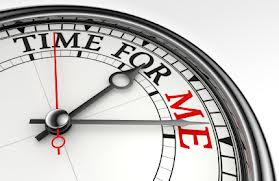 Decisions, Decisions
Decisions, Decisions
How much time do you spend making decisions? What to write about, should I exercise, who to call next, which task on your to-do list is next, which emails to answer, etc. Each day we are faced with a myriad of choices. Some decisions don’t take long, but some eat up our time. By minimizing small decisions, I help my coaching clients gain 1 hour (or more) every day. We accomplish this through use of a time map and weekly planning.
One of the great benefits of having a Time map for your week is that it saves so much decision-making time. Here is an example of small decisions eating up your time. Say you have a 7 hour workday and you switch activities 7 times. In the morning, you take 10 minutes deciding what to do first. You work on Quickbooks. Then, you take 10 minutes to decide your next action. And so on. If you use 10 minutes each time you switch activities, and you switch activities each hour, you have spent 1 hour and 10 minutes on decisions. What a good time map does for you: instead of losing that 10 minutes, one quick glance at the map and you know what type of activity to do next. And this is a plan you made deliberately by yourself or with a time coach, when the pressure of the day is not coming down on you. You’ve used it, tweaked it, and arranged it so that your schedule makes sense to you.
What is a time map, you ask? It is a customized guide to the week. I create a custom time map for all those I coach. In it, we have set aside time for achieving goals, and for the main activities they need and want to do. Clients who use their map report being more productive, less stressed, and feeling a great sense of accomplishment at the end of each day. They feel in control and assured that everything important has gotten done.

Before you can make a plan or Time map, you need to know where you want to end up. What are your goals for your business this week, this month, or this year? Once you have goals as a guide, your North Star to steer by, some tasks become a priority and others fall by the wayside.
That brings me to my next point: Take time to plan your week and prioritize your tasks. Going back to the mariner term—if you don’t have a map, you will wander around the ocean of choices and take much longer to arrive, if you do manage to arrive.
Planning your week doesn’t have to be laborious. Thirty minutes to an hour is plenty of time. I encourage my clients to make time for planning either Friday or Monday. They report their week goes smoothly and they feel more in control when they set aside the time to do this. Planning is the most beneficial action you take to create a successful week. It leads to deep feeling of accomplishment each Friday.
Typically, I check my calendar for the week and make my to-do list during this time. I then look at my goals, and my time map, to make sure I plan time for the most important activities. It helps me keep a balance between work and family. If I start to get caught up in getting Everything done before 5, a glance at my time map helps me remember my main priority late afternoon is my family. If I have done my job properly, the most pressing tasks of the day are done before then. Another benefit of planning: by looking at my schedule first thing Monday, I notice if I have any overlapping appointments. Also I see if I’ve planned enough transition time between activities, including travel time.
To review: If what you are doing isn’t working, do something else. Plan your week. Map out a productive week by yourself or with a Time Coach. Save at least an hour each day, using it to make more money or go home early! It really is a formula for success.
What would you do with your hour?








